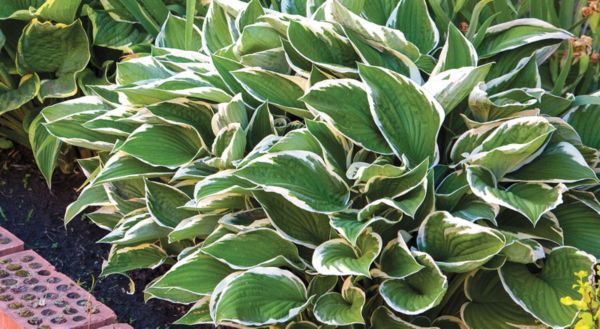How to Grow Peaches
Authored by Leah Chester-Davis
A plump, ripe, juicy peach is one of the delightful flavors of summer. Peaches are flavor-packed and vitamin-rich.
A plump, ripe, juicy peach is one of the delightful flavors of summer. Peaches are flavor-packed and vitamin-rich. They are at their best at the height of the growing season. They can be preserved for a taste of summer year-round by freezing or canning. They can be dried, and they can be used to make jams and jellies.
This versatile fruit is used in pies, cobblers, crisps, cakes, pancakes, waffles, muffins, and breads. Peaches can even be grilled and paired with salad greens with a shaving of Parmesan cheese. They are delicious grilled, sprinkled with sugar and cinnamon, and topped with a scoop of ice cream. They can be diced and used in salsas and dressings. They are quite refreshing in milkshakes or smoothies. But a perennial favorite way of consuming this delectable tree fruit is just as it comes off the tree when it is ripe, sweet, and juicy.
Growing your own peaches can be challenging but well worth it if you are willing to put in the time and energy this crop needs.
About peach
| Botanical name: | Prunus persica |
| Common name: | Peach |
| Plant type: | Small Tree |
| Size: | 15 feet tall and 20 feet wide |
| Sun exposure: | Sun |
| Soil type: | Many types, well-drained |
| Soil pH: | 6.5 |
| Hardiness zones: | 4 to 9, depending on varieties |
| Average first frost: | Varies by region |
| Average last frost: | Varies by region |
| Container friendly: | No |
| Beginner friendly: | No |
Growing

Before purchasing plants, consider where you will grow the fruit tree. While peaches may be considered small trees, they will still need adequate space. Standard trees typically spread up to 30 feet; the semi-dwarf types will spread to about 15 feet. They will need plenty of sun, at least 8 to 10 hours per day, well-drained soil, and protection from winter winds.
Peach trees are self-fruitful, which means it isn’t necessary to plant more than one peach variety for pollination. If growing more than one tree, Georgia Extension recommends spacing 18 to 20 feet apart.
Get your soil tested before planting and follow recommendations when it comes to adjusting pH and fertility. Soil pH needs to be 6.5. Soil test kits are available from most county Extension offices for free or for a nominal fee. A fruit tree can live 10 to 20 years, so the investment in preparing the soil and planting area can be well worth it.
Inquire with your local garden center or county Extension office for recommendations on best varieties to grow in your region. This will vary across the country.
Recommendations will likely take into consideration your Plant Hardiness Zone and the chill hours for your region. According to Georgia Extension, one of the main factors to determine if a peach tree is adapted to a location is the chill hours. Each variety has a chill hour requirement, which is the amount of time that the temperature is between 32 degrees F and 45 degrees F. Chill hours refer to the number of cold hours needed by peaches, or any deciduous crop, to break winter dormancy. Inadequate chilling can result in poor bud break, flower bud death, reduced quality and fruit set, small fruit, and weakened trees.
Purchase rootstock or trees from a reputable garden center or nursery. Select healthy 1-year-old trees that are about 3 to 4 feet tall with a good root system.
When selecting peaches, you will likely come across clingstone and freestone cultivars.
Clingstone
In clingstone types, the pit adheres to the flesh. These peaches also may be smaller and ripen earlier.
Freestone cultivator
In freestone cultivars, the flesh separates easily from the pit and the peaches are typically larger.
To calculate chill hours, add the number of hours between 32 degrees and 45 degrees from a period in October or November through mid to the end of February. (Note: these dates vary per region so check with your local nursery or Extension office for dates typically used to calculate chill dates in your area.) Some state Extension services or weather services have calculators to determine the chill hours for your region.
Planting

Peach trees are typically available as potted trees or bare root plants. Don’t let either dry out. Keep bare root plants moist and shaded. Plant as soon as possible. Plant while dormant, from early winter in warmer climates to late spring in colder climates when soil can be worked.
Dig a hole wide and deep. It should be twice as wide as the width of the rootball and deep enough to be at the same depth as it was planted at the nursery. Avoid cramping or bending the roots. Work the soil in and around the roots and tamp down lightly when the hole is half-way filled. Complete filling the hole and pack the soil firmly. Do not add fertilizer to the hole. Water thoroughly.
Add a thin layer of mulch to keep weeds away from the tree, at least in an area 3 feet around the tree. This prevents the tree from having to compete for both nutrients and moisture.
When the tree blooms in the spring, hand thinning some of the flowers can help produce larger peaches. Penn State Extension recommends thinning to about 8 to 10 inches between each fruit.
Peaches need to be pruned. The timing depends on your region so check with your local Extension office. Pruning too early makes the tree susceptible to winter injury. Pruning too late may reduce fruit size. Your county Extension office or Master Gardeners are good resources for guidance on pruning.
Fertilizing
According to Clemson Extension, fertilizing peaches starts with adjusting the soil pH to 6.5 before planting. If lime needs to be incorporated, do so at least 12 inches deep and over a 10-by 10-foot area.
- Fertilization times can vary across the country, generally March in warmer climates and May in cooler climates. Check with your local garden center or county Extension office for recommendations. Do not fertilize late in the year, after August 1.
- For most home gardens, University of New Hampshire Extension recommends an application of half a pound of complete fertilizer, such as 10-10-10, to non-bearing trees. Broadcast it over an area 3 feet in diameter. For mature bearing trees, the recommendation is one pound of 10-10-10.
- Adjust application rates depending on the health of your tree. Vigorous growers may not need fertilizer, for example.
Controlling Pests, Diseases, and Other Problems
- Brown rot can be a problem and is typically controlled with spray fungicides. Clemson Extension recommends starting dormant sprays and using through the growing season.
- Insects include plum curculio, stink bugs, grasshoppers, beetles, and moths. Pesticides can be used. Follow label directions. If going the organic route, consider specialty fruit bags that encase the fruit, allowing for minimal chance of attack by fungi or insects.
- Insecticides can be harmful to bees. If using, apply late in the day when bees are not out and about.
Harvesting and Storing

Depending on your region of the country, peaches typically begin producing in June or July. The beauty of tree fruits is that you will typically harvest over a period of time as the fruits do not all mature at one time.
Look for creamy yellow to dark orange, red, or reddish pink fruit. If the peach still has some green, it is not fully ripe. When ripe, the fruit yields to gentle hand pressure along the crease. Fruits on the ends of branches and those high in the tree ripen first. Taste test the first peaches to determine whether others are ready for harvest. Be careful to avoid bruising the peaches.
Storing
If peaches still need to ripen, store them at room temperature or in a loosely closed paper bag. Unripe fruit will not continue to ripen in the refrigerator. If peaches are fully ripe, consume immediately or store in the refrigerator 3 to 5 days.
Peaches typically freeze beautifully. Retain both appearance and flavor by using ascorbic acid products. A water or syrup pack are a couple of methods. One of the easiest methods is to peel, pit, and slice peaches. Sprinkle Fruit Fresh on the raw, sliced peaches. Use about ½ teaspoon for every cup of peaches and mix thoroughly so the product gets on all the peaches. Drain, if needed, then place peach slices onto parchment-lined cookie sheet. Keep the peach slices spaced apart. Freeze 4 to 6 hours until peaches are thoroughly frozen. Remove from trays and store in ziptop freezer bags. It’s easy to measure out as few or as many as you need for smoothies or other recipes.
Peaches also can be canned, dried, or made into relishes, salsas, or spreads.
Fruits on the ends of branches and those high in the tree ripen first.
Expert Tips

- Check with your local garden center or nursery or county Extension office for best planting and fertilizing dates, pruning guidelines, and best cultivars for your region
- Take the time to get a soil test and adequately prepare the planting site.
- Implement good cultural requirements such as healthy soil, weed suppression, plenty of sunshine and water to reduce pests and diseases.
Frequently asked questions
Do I need to plant more than one peach tree for pollination purposes?
Most peach trees are self-pollinating, also called self-fruitful, and you do not need to plant more than one tree or more than one cultivar. There are a few cultivars that require cross pollination, but these are rare.
Is it necessary to thin and prune my trees?
Missouri Extension shares that most peach cultivars set too many fruits and that only 10 percent of the flowers are needed to set fruit for the tree to have a full crop load. Therefore, yes, thinning the flowers will help ensure larger peaches. Thin to about 8 inches apart. When it comes to pruning, yes, pruning also benefits the plant. It invigorates it, helps it develop a healthy canopy, and helps improve the yield.
What type pruning method is needed?
An open center style, sometimes called a vase shape, is typically used. The main branch is pruned just above a side branch to prevent the tree from growing tall and to keep branches lower for easier harvesting.





